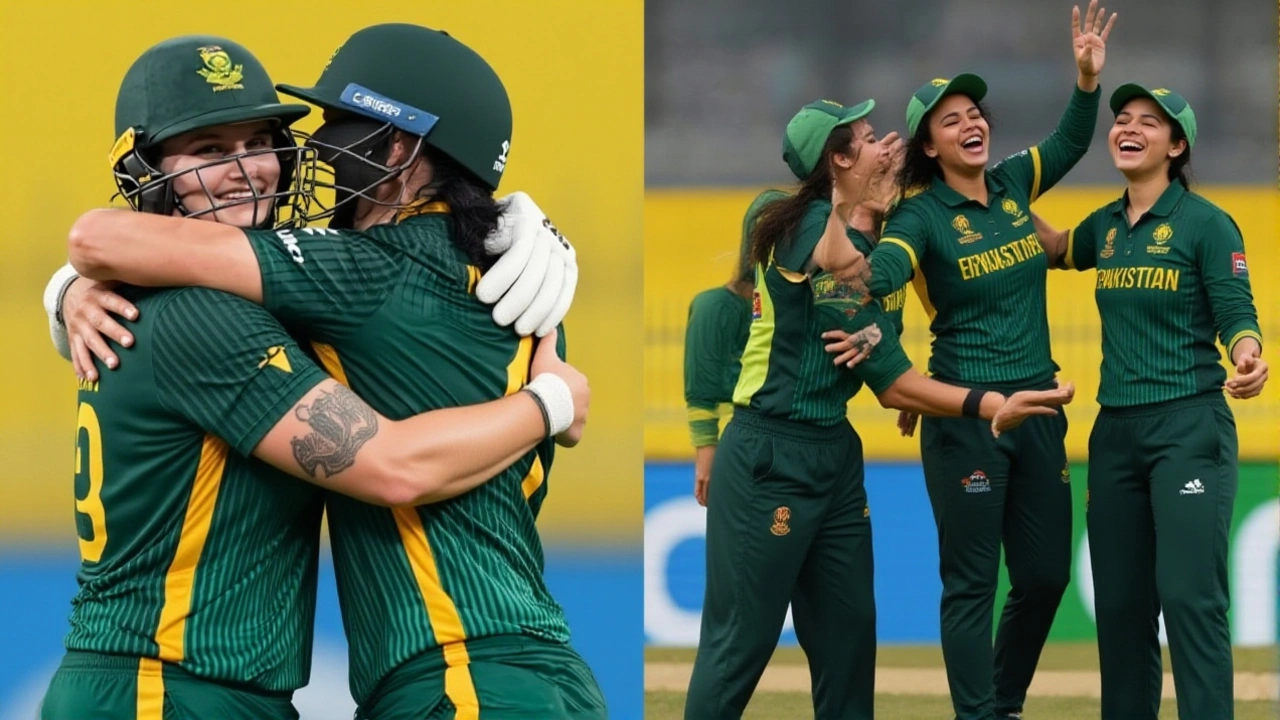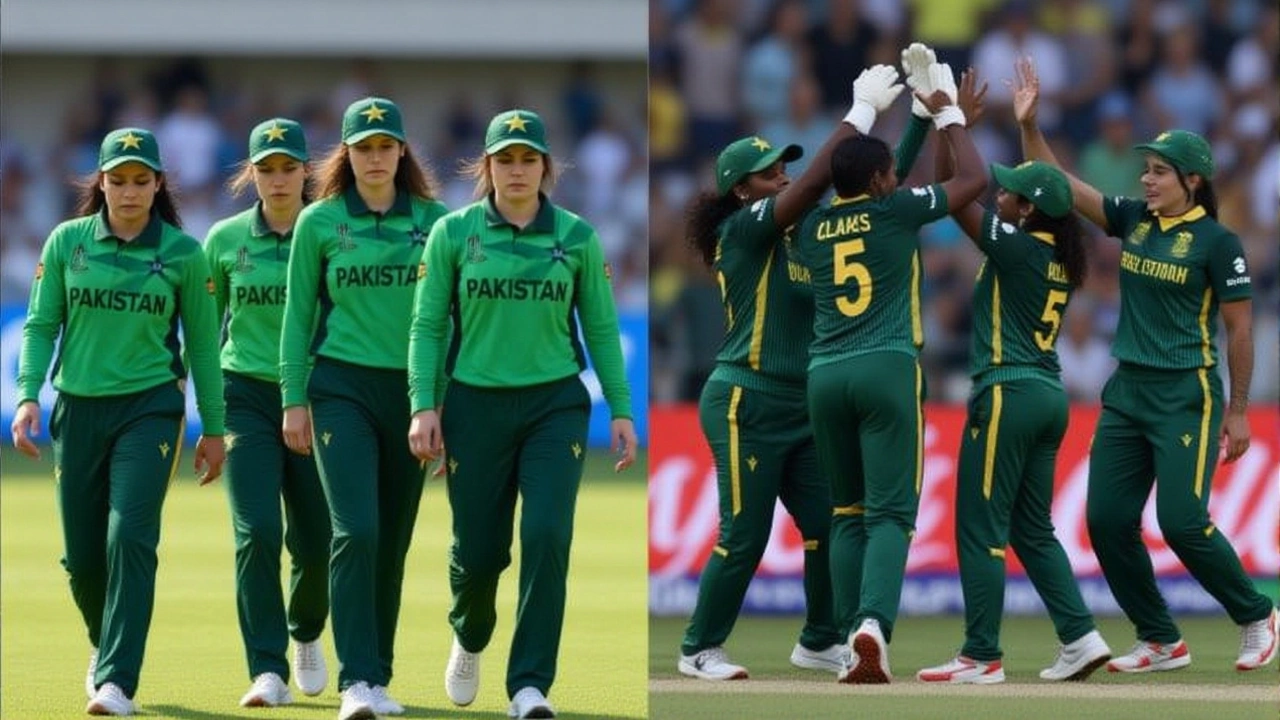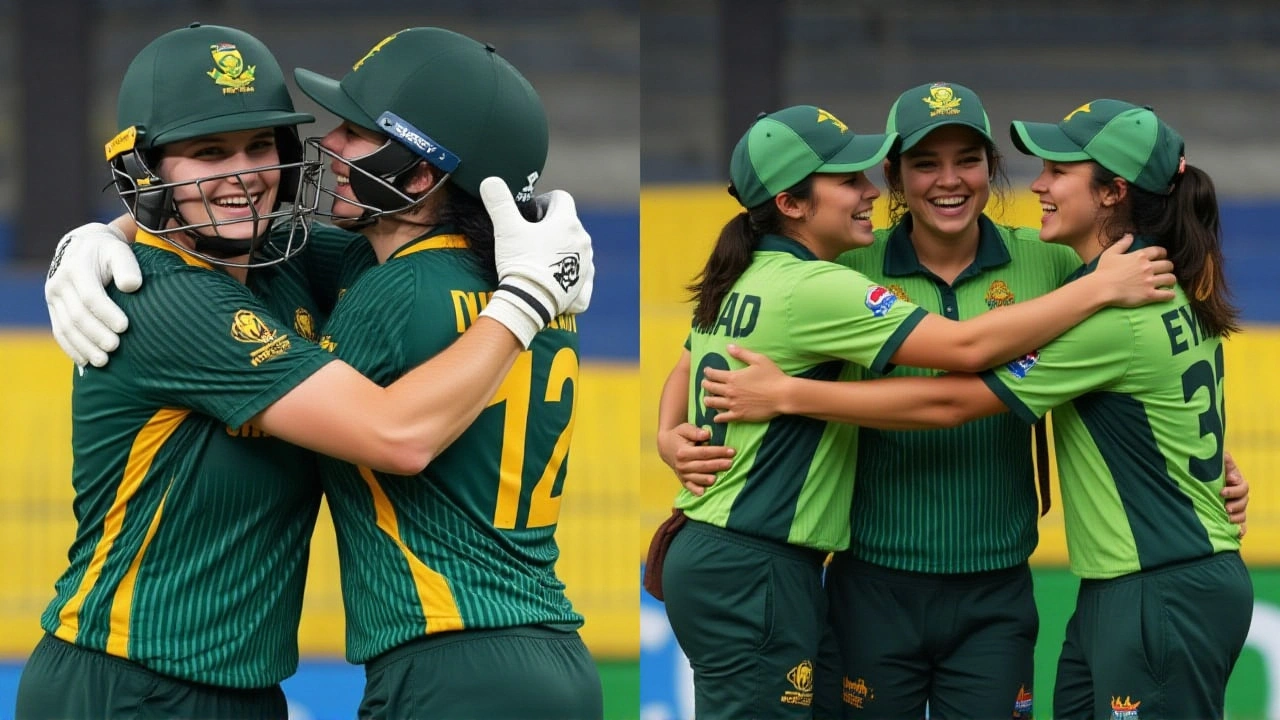When South Africa women's national cricket team smashed a 312/9 total against the Pakistan women's national cricket team at an undisclosed venue, the entire tournament felt the tremor. The clash, part of the International Cricket Council's ICC Women's Cricket World Cup 2025, ended with a 150‑run margin after the Duckworth‑Lewis‑Stern (DLS) adjustment, propelling South Africa to the top of the standings.
Background: The 2025 Women’s World Cup in context
The 2025 edition, hosted across several South Asian and African venues, follows the classic round‑robin format where each of the eight teams plays the others once. Points are awarded – two for a win, one for a no‑result – and the top four move on to the semifinals slated for 15‑16 November. Cricket South Africa entered the tournament with a 5‑1 record, while Pakistan Cricket Board sat at 0‑4, desperate for a lifeline.
Match summary: How the Proteas sealed the win
Pakistan won the toss – Fatima Sana, the 26‑year‑old skipper, elected to field first. The decision back‑fired quickly. South Africa’s opening partnership steadied, but it was Laura Wolvaardt, the 25‑year‑old captain, who anchored the innings with a crisp 90. Supporting knocks came from Sune Luus (61) and the all‑rounder Marizanne Kapp, who finished unbeaten on 68.
Rain‑affected play forced a reduction in overs, but South Africa still managed to post 312 for nine in exactly 40 overs – the highest total ever recorded by the Proteas in a Women’s World Cup. The DLS method set Pakistan a revised target of 306, but they could only muster 156/10, with wicket‑keeper Sidra Nawaz top‑scoring with an unbeaten 22 before the innings collapsed.
Key performances and statistics
- South Africa: 312/9 (40 overs) – highest World Cup total for the side.
- Pakistan: 156/10 (28.3 overs, DLS target 306) – fourth defeat, elimination from knockout race.
- Laura Wolvaardt – 90 runs, 55 balls, strike rate 163.6.
- Marizanne Kapp – 68* runs and a mystery‑impact bowling spell that forced crucial wickets.
- Fatima Sana – won the toss, fielded first, but could not rally the batting line‑up.

Reactions from the sidelines
While the ICC’s official match report omitted direct quotes, analysts in Johannesburg and Lahore were quick to weigh in. South African cricket pundit Thabo Mokoena described the innings as “a masterclass in pacing a chase under pressure,” noting that the partnership between Wolvaardt and Kapp “re‑defined what a 300‑plus total looks like in limited‑overs women’s cricket.”
In contrast, Pakistani coach Rashid Latif (quoted in local media) admitted that the team “never got off the mark” and emphasized the need to regroup before the final group games against Bangladesh and Sri Lanka.
Implications for the tournament standings
South Africa’s win lifted them to 10 points from six matches, nudging them ahead of Australia, which had also sat on 10 points but from seven matches. With two group fixtures remaining – a showdown against New Zealand and a high‑stakes meeting with England – the Proteas now control their own destiny. A win in either match guarantees a semifinal berth, while a loss could potentially hand the edge to England if the latter triumphs over New Zealand.
Pakistan’s defeat mathematically ends their hopes of reaching the knockouts. The side will finish the group stage with two dead‑rubber matches, likely using the opportunity to blood younger talent for the next cycle.
Historical perspective: Where this win fits
Since 2000, South Africa has appeared in every Women’s World Cup, gradually climbing the ranks. The 312/9 total eclipses the previous best of 307/8 set against Ireland in 2017, marking a new benchmark for the nation. For Pakistan, the 2025 campaign has been a learning curve; their best World Cup performance remains a quarter‑final appearance in 2009.

What’s next for the Proteas and the Shaheens
South Africa’s next fixture against New Zealand on 12 November will test the batting depth discovered in this match. A win against England on 14 November could see the Proteas lock in a top‑two finish, ensuring a favorable semifinal opponent.
Pakistan, meanwhile, will face Bangladesh on 13 November and Sri Lanka on 15 November. Though the matches carry no knockout weight, they offer a platform for players like Sidra Nawaz to gain confidence and for the coaching staff to assess talent ahead of the 2027 cycle.
Key facts at a glance
- Date of match: early November 2025 (exact day not disclosed).
- Venue: undisclosed, but both teams travelled via their respective cricket boards.
- Result: South Africa won by 150 runs (DLS).
- Points impact: South Africa 10, Pakistan remain at 0.
- Next games: South Africa vs New Zealand, England; Pakistan vs Bangladesh, Sri Lanka.
Frequently Asked Questions
How does South Africa’s win affect its chances of reaching the semifinals?
The victory pushes South Africa to 10 points with two games left, putting them in pole position. A win in either remaining match guarantees a semifinal slot, while a loss still leaves them in contention provided England or New Zealand slip up.
Why was the DLS method applied, and how did it change the target?
Rain interruptions reduced the overs available for Pakistan’s chase. The DLS algorithm recalculated a fair target of 306 runs instead of the full 312, effectively lowering the required runs by six but still leaving a steep climb that Pakistan could not meet.
Who were the standout performers for South Africa?
Captain Laura Wolvaardt with 90 runs and all‑rounder Marizanne Kapp, who contributed an unbeaten 68 and took key wickets, were the clear stars.
What does Pakistan need to do after this loss?
With knockout hopes gone, Pakistan will focus on rebuilding. The upcoming games against Bangladesh and Sri Lanka provide a chance to give younger players exposure and to work on batting depth under the guidance of the Pakistan Cricket Board.
How does this match compare historically for South Africa?
The 312/9 total eclipses the former World Cup record of 307/8 set in 2017, marking the highest score South Africa has ever posted in a Women’s World Cup. It also represents their fifth win in a row in this tournament, a streak not seen since the early 2000s.

